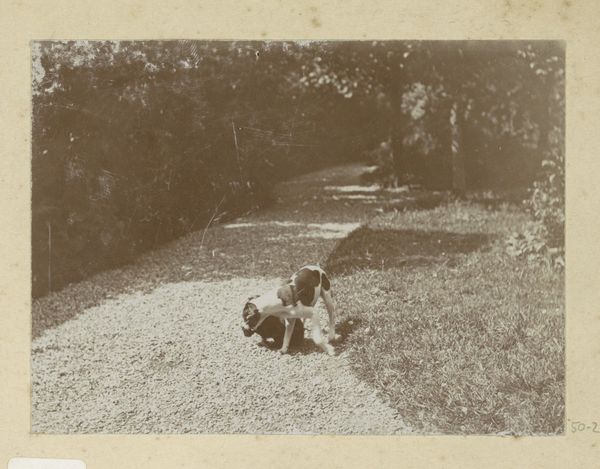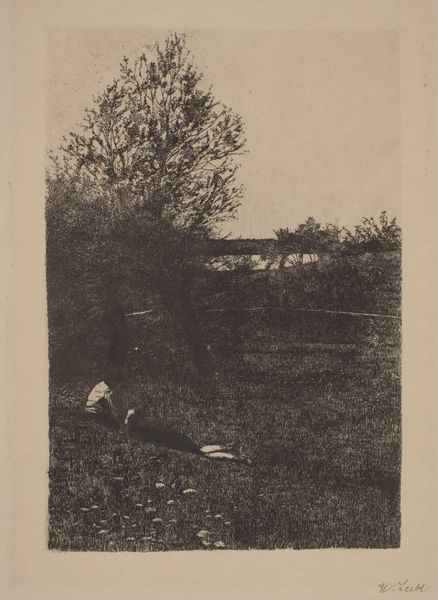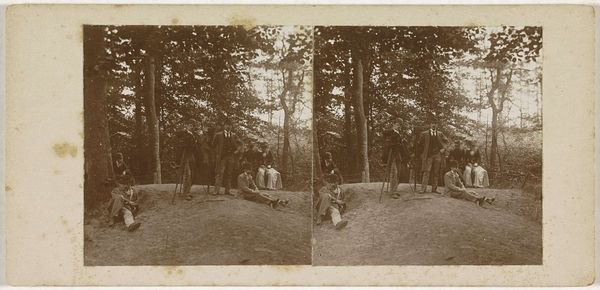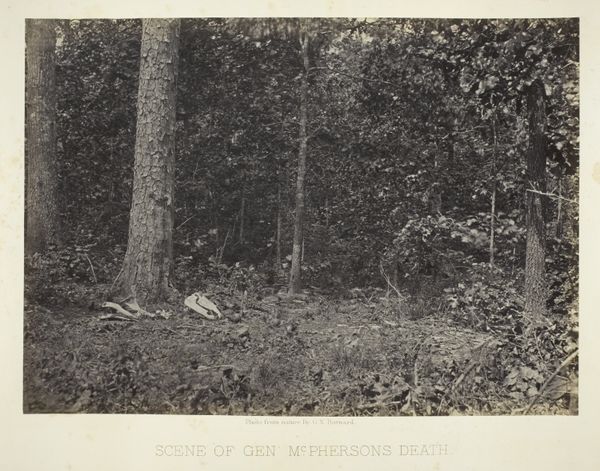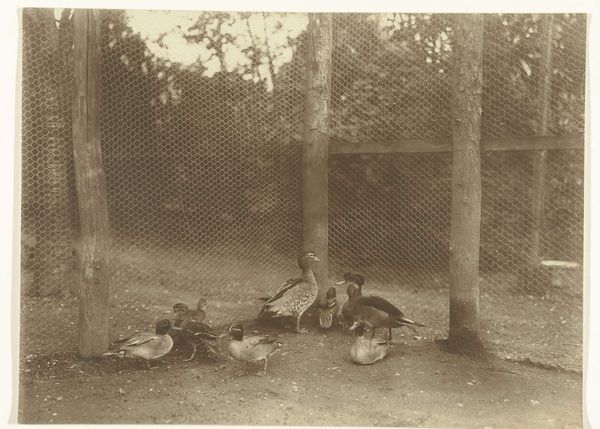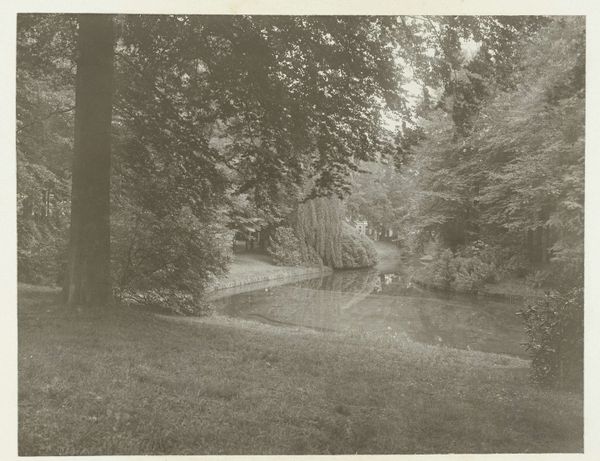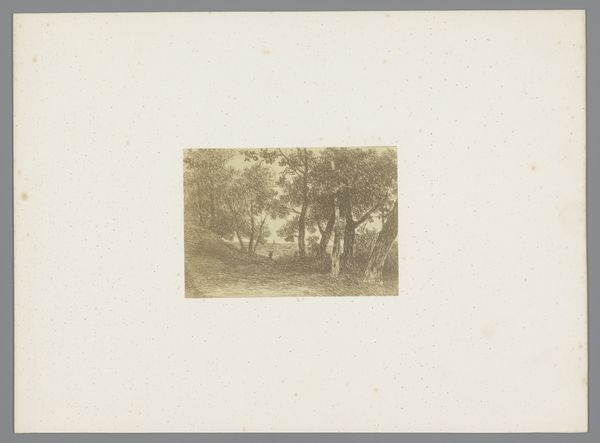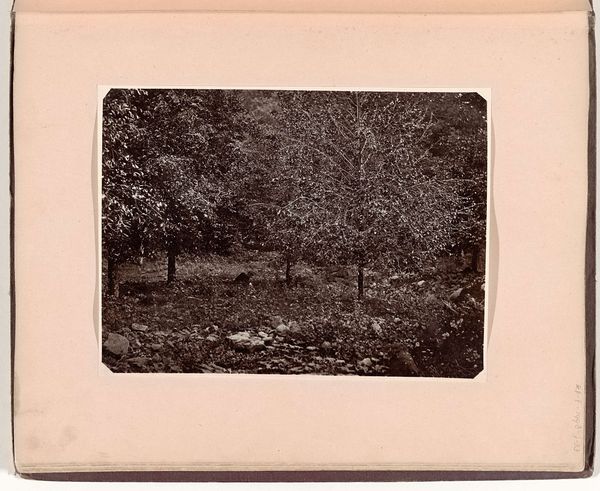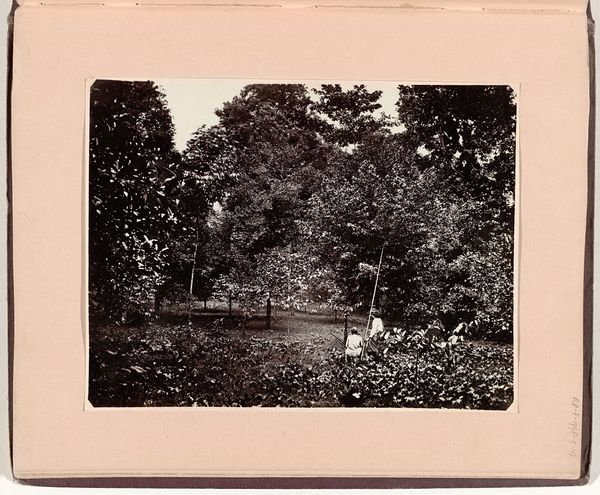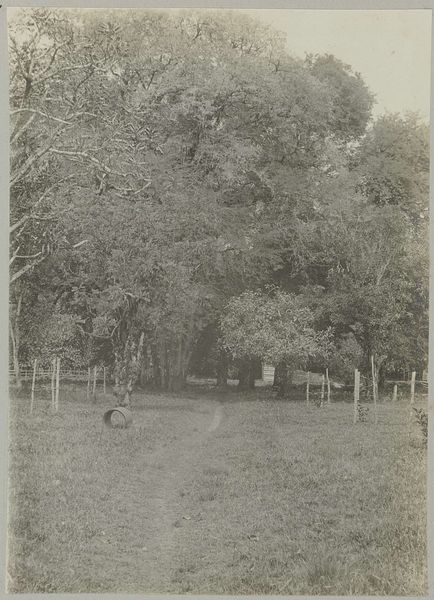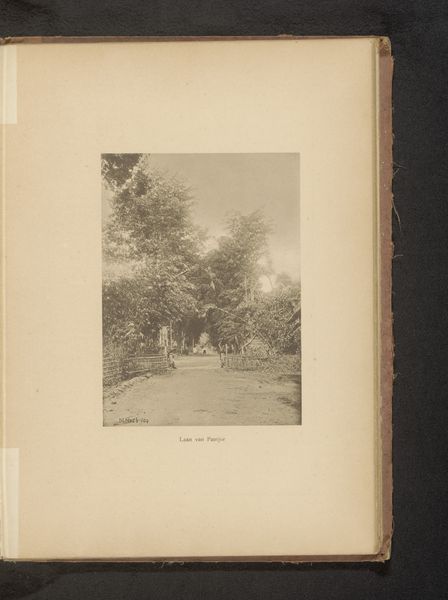
Dolph Kessler met een vriend in het bos bij Gainsborough c. 1903 - 1904
0:00
0:00
geldolphadriaankessler
Rijksmuseum
Dimensions: height 80 mm, width 110 mm, height 363 mm, width 268 mm
Copyright: Rijks Museum: Open Domain
Curator: Let's discuss "Dolph Kessler with a Friend in the Woods near Gainsborough," a gelatin silver print, dating from around 1903 to 1904, currently held here at the Rijksmuseum. What strikes you initially? Editor: The atmosphere, definitely. A sense of tranquil leisure, an intimate portrait framed by the density of the woods. The composition seems to echo the subject matter, intertwining figures and nature. Curator: Interesting observation. What I see are the layers of materiality. We have the gelatin silver print itself, a chemical process involving specific materials and labor to create this image. The social context also plays a crucial role. Photography, at the time, offered a new means for Kessler, a member of the Dutch elite, to represent himself and his social circle engaged in leisure. How was such free time acquired? By whom, and at what cost? Editor: Well, thinking formally, consider the balance—or imbalance—of light and shadow, and how that contributes to the mood. The subjects are softly lit, inviting the eye, yet the dark trees create an element of the unknown and mystery. This could reflect how humans were thinking about nature at that time. It also lends a depth of meaning. Curator: But isn't that darkness reflective of the era itself? Consider the rapid industrialization happening, impacting these people, literally and figuratively, leading to a search for solace in an untouched natural world... and impacting its availability. Look closer—isn't that a camera stand right next to them? Editor: An interesting point. Visually, the horizontal line formed by their bodies, that is mirroring the forest horizon, anchors the entire piece, providing a visual grounding within the taller verticals of the woods. It reinforces a unity with nature—but now I also see what you see with that stand. Curator: The fact that a fairly bulky camera and stand appear to be lying unused nearby is rather illuminating. Perhaps we are not meant to believe it is as spontaneous a scene as one might originally think? Or is this just showing the leisure of this man and his class at this time. Editor: I see it, certainly, and hadn't looked so critically at first. This shows that by attending to formal elements alongside social conditions and visible objects we uncover more layered understandings. Curator: Exactly! Appreciating both artistic structure and underlying stories helps us truly unravel a piece like this. It is much more layered than it would first appear.
Comments
No comments
Be the first to comment and join the conversation on the ultimate creative platform.
